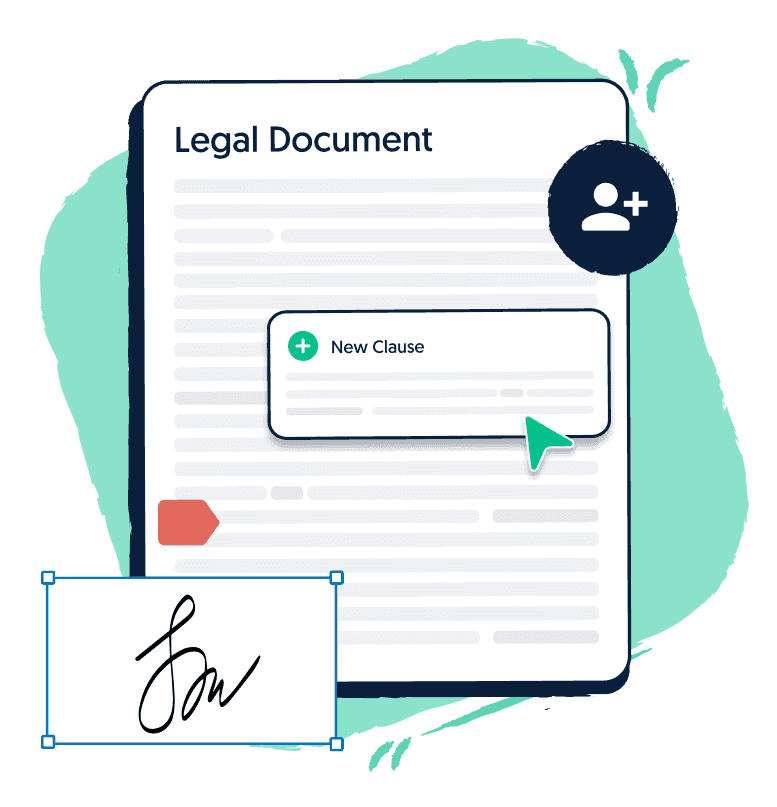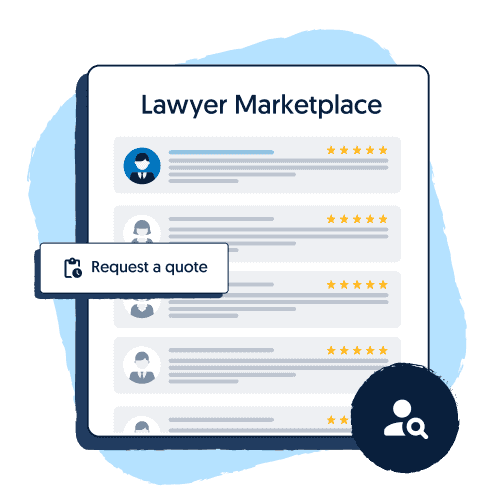Did you know that as an employer, you might be held liable for the actions of your employees? In Tort Law, this is known as vicarious liability. The idea can be unnerving, but don’t worry — there are ways to mitigate this through proper training and employee support.
In this guide, we will walk you through the definition of vicarious liability, explain its potential legal implications, and go over tips on how to minimise your risks.
Table of Contents
What is vicarious liability?
In general terms, vicarious liability is a legal principle that holds a person responsible for the wrongful actions of another.
In the workplace, employers might be held liable for the actions of their employees. This legal framework is particularly relevant in relation to employee misconduct as it protects the rights of those who might be affected.
It’s important to know that the person held liable does not need to know that the other person had committed the act. So, even if you, as an employer, did not know that the employee did something wrong, you could still be held vicariously liable for the damage it has caused.
Vicarious liability is fundamental to modern workplace compliance and risk management strategies, as it encourages employers to implement robust training programs, clear policies, and effective supervision to minimise the risk of employee misconduct.
How vicarious liability works in employment
Vicarious liability can apply to various scenarios, including workplace harassment, discrimination, and negligent acts.
Importantly, vicarious liability does not mean employees won’t bear personal responsibility. Rather, if found guilty, both the employee and employer may be held liable.
The good news is that employers can defend against vicarious liability claims by demonstrating that they have taken all reasonable steps to prevent the issue from arising.
The legal basis for vicarious liability
In Australia, the legal basis for vicarious liability is rooted in both common law and statutory provisions. For instance, the Work Health and Safety Act 2011 (NSW) renders employers liable for the actions and inactions of their subordinates when acting within the scope of their employment. This liability extends to various workplace settings, including employer-sponsored events, work-related social functions, and business trips.
A notable example from Australian law is the case of Gama v Qantas Airways Ltd. Qantas was held vicariously liable for racial discrimination because employees made discriminatory remarks in the presence of a supervisor. As a result, these were deemed to be “condoned” by the employer.
Vicarious liability example: Discrimination or Harassment
Through vicarious liability, employers may be held liable for any discrimination or harassment that occurs in the workplace. Of course, employees who harass, bully, or discriminate against other employees will be personally liable for the damage they may cause to victims. However, employers will be equally liable if they do not take ‘reasonable steps’ to mitigate the issue.
There is no clear definition of ‘reasonable steps’ in anti-discrimination laws. However, it generally refers to making arrangements that will mitigate cases of harassment or discrimination in the workplace.
So, what can you do to protect yourself? Having the appropriate workplace policies — such as workplace discrimination policy — is critical. A policy and relevant training will help your employees understand what is expected of them and what actions will be taken if they breach the policy.
Terms and conditions of vicarious liability
Vicarious liability in Australia comes into play under certain circumstances, mainly when an employee does something wrong while doing their job. Here’s a breakdown of the conditions that trigger vicarious liability in the workplace:
- Course of employment: This means the employee was doing their job or something closely related to it when the incident happened. For example, if a delivery driver causes an accident while making deliveries, that’s within their course of employment.
- Clear work relationship: There needs to be an obvious employer-worker relationship. This usually doesn’t apply to contractors or casual helpers.
- Job-related wrongdoing: The mistake or bad behaviour must happen while the person is working or doing something connected to their job.
Remember that you will not necessarily be held liable for your employees’ wrongdoings. You can protect yourself by showing that you did everything you reasonably could to prevent problems. This might include:
- Having clear rules about proper behaviour at work
- Training employees regularly
- Dealing with complaints quickly and fairly
If you can prove that you’ve done these things, you might have a better chance of defending yourself against vicarious liability claims.
Does vicarious liability apply to individual contractors?
The High Court of Australia has recently clarified that vicarious liability primarily applies to employer-employee relationships, not to independent contractors or relationships “akin to employment.”
The distinction between contractors and employees is crucial in determining the application of vicarious liability. Employees are typically integrated into the business and work under the direct control of the employer, while contractors maintain a higher degree of autonomy.
Even so, there are other circumstances to consider, including:
- Contract terms: The agreement between the principal and contractor may influence liability.
- Nature of the relationship: If a contractor works predominantly for one client with minimal independence, the relationship may be scrutinised more closely.
- Indemnity clauses: Many subcontracts require contractors to indemnify the principal for liabilities arising from their actions.
It’s important to note that while vicarious liability may not automatically apply to independent contractors, principals should still take precautions:
- Ensure contractors have adequate insurance coverage.
- Clearly define the relationship in contracts to distinguish between employees and contractors.
- Seek legal advice to navigate the complexities of vicarious liability in non-employee relationships.
How employers can manage and mitigate vicarious liability risks
Vicarious liability can be stressful for employers — after all, you don’t have control over other people’s actions. However, there are various ways in which you can mitigate vicarious liability risks. Here are some measures you should consider.
Develop clear workplace policies
Establish comprehensive policies that address appropriate behaviour, discrimination, harassment, and bullying. This could include:
- Discrimination policy
- Work health and safety policy
- Performance management policy
- Performance and misconduct policy
- Harassment and bullying policy
- Diversity policy
- Workplace investigation policy
Your employees should be able to access these policies easily. They should also clearly outline expectations, consequences, and reporting procedures.
Provide regular training
Beyond simply having policies in place, it’s important to make them actionable. To do so, conduct ongoing education for all employees, with a special focus on managers and supervisors.
Training should cover:
- Workplace laws
- Acceptable conduct
- Your company’s specific policies
Use real-world scenarios and interactive sessions to enhance understanding and retention.
Implement effective reporting mechanisms
Issues do arise, so make sure that employees have a way to communicate them. Create confidential and accessible systems for employees to report unlawful behaviour without fear of retaliation.
This could include anonymous hotlines, dedicated email addresses, or third-party reporting services. Ensure that all employees are aware of these reporting channels and feel comfortable using them when necessary.
Conduct prompt investigations
When you receive complaints, investigate them as soon as possible. Develop a standardised investigation process that respects the rights of all parties involved.
Take appropriate actions based on the findings, and communicate the outcomes (while maintaining confidentiality) to demonstrate that the company takes these matters seriously.
Foster a positive workplace culture
The safety of your workplace starts with you. That’s why, it’s critical that you promote respect and inclusivity from the top down, with leaders modeling expected behaviour.
Encourage open communication, diversity, and mutual respect among all employees. Recognise and reward positive behaviours that align with the company’s values and ethics.
Clearly define employment relationships
Legal protections for your business are also crucial. Make sure to distinguish between employees and contractors in contracts and operational practices. Use the right type of contract for different relationships:
At each step of the way, make sure that all parties understand their rights and responsibilities.
Seek professional legal advice
If you are worried about facing a vicarious liability claim, it might be time to consult with employment law experts. They can help you navigate complex vicarious liability issues and ensure compliance with current regulations. Also, consider having a legal expert review your policies and procedures periodically to ensure they remain legally sound.
FAQ
Can an employer avoid vicarious liability?
While it’s challenging to completely avoid vicarious liability, employers can significantly reduce their risk by taking reasonable steps to prevent wrongful acts. This includes implementing clear policies, providing regular training, and promptly addressing any issues that arise.
What is a simple example of vicarious liability?
A straightforward example of vicarious liability would be if an employee harasses a coworker during work hours. In this case, both the harassing employee and the employer could be held liable for the misconduct, even if the employer was unaware of the specific incident.
Final thoughts
As an employer, you need to be careful about the responsibility you have for employees’ conduct. To prevent wrongdoings, make sure to implement appropriate workplace policies and training. Additionally, having a proper system for staff complaints is essential for mitigating vicarious liability.
Ready to create workplace policies to minimise vicarious liability risks? Check out Lawpath’s professional legal documents to help you get started.







